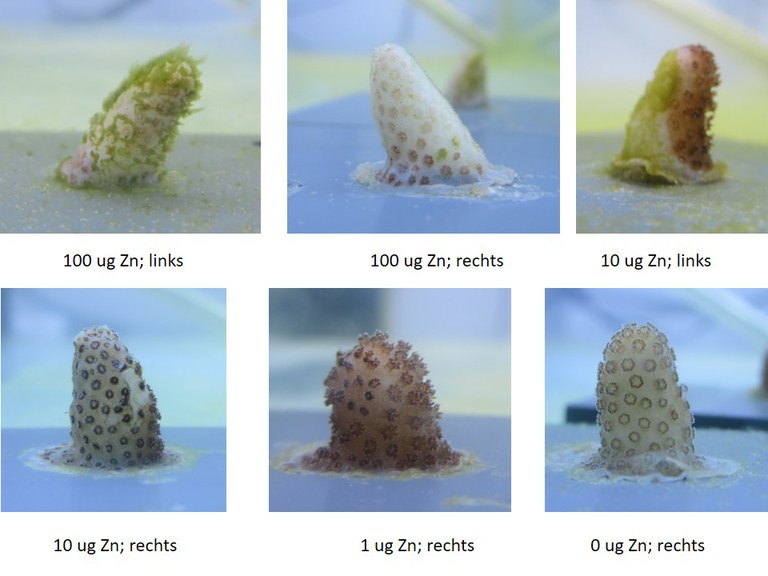The abstract of the paper published in PeerJ sums up the findings nicely:
Zinc levels in artificial seawater are often unnaturally elevated, and thus potentially toxic to aquacultured corals. However, our knowledge of how zinc affects corals is still limited. We tested the effects of zinc supplementation (0, 1, 10 and 100 µg L–1) on health, growth, NDVI (a proxy for chlorophyll a) and overall colouration of the stony coral Stylophora pistillata. After two weeks, no signs of necrosis were observed in any of the treatments. However, at 100 µg L–1, we detected a considerable ~62% growth reduction compared to zinc levels of 0 to 10 µg L–1. In addition, NDVI was significantly reduced by ~36% at 100 µg L–1 zinc, indicating loss of chlorophyll a. Zinc did not affect coral colouration in general, although reflection intensity increased markedly at 100 µg L–1, most likely due to a loss of chlorophyll a. In conclusion, the No Observed Effect Concentration (NOEC) after a two–week zinc exposure was 10 µg L–1 for S. pistillata. Our results show that potentially toxic metals such as zinc, found in commercial sea salts and supplements, can have detrimental effects on corals. Therefore, we recommend regular monitoring and restrained supplementation of zinc in coral aquaculture system
The study reinforces the idea that essential elements can become deleterious in higher-than-natural concentrations. Reefkeepers and aquaculturists all understand the importance of keeping chemical and physical parameters close to natural seawater. Yet, there are still a lot we don’t understand about how specific elements and chemicals effect our captive animals.
And this is why science matters and must be supported 











0 Comments